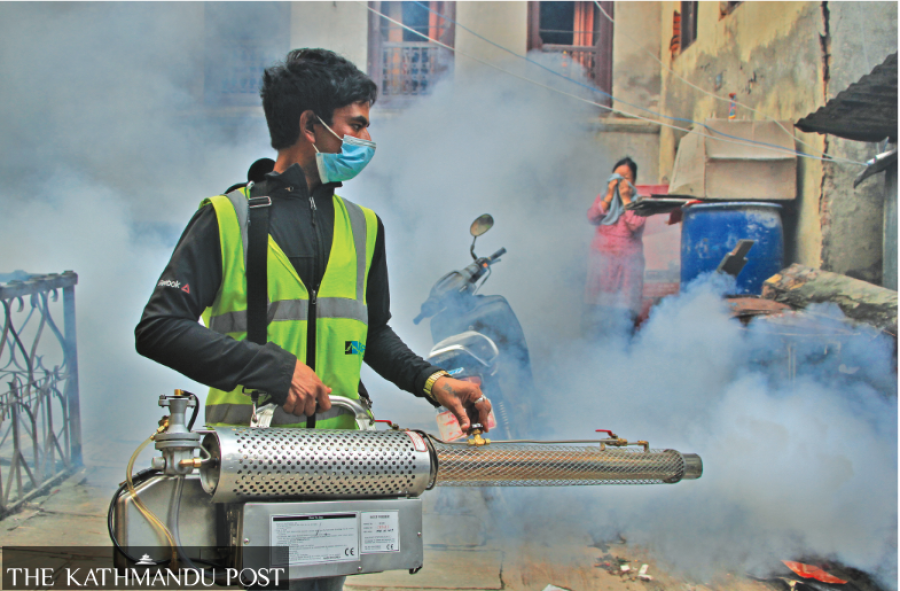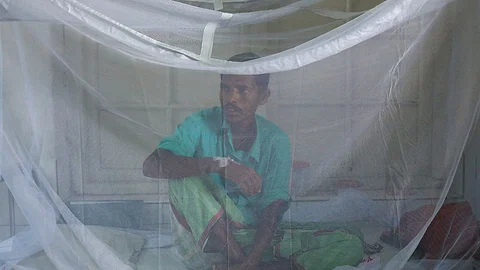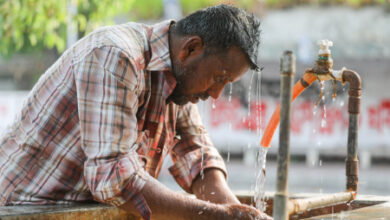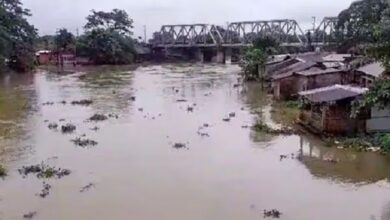Rising Dengue Threat in South Asia Intensifies Amidst Climate Change Crisis
Rising temperatures have disrupted the typical seasonal patterns, causing dengue cases to occur even in colder autumn months. This shift in patterns has left health officials and experts puzzled, describing it as "strange."
![Dengue patients at Sir Salimullah Medical College Hospital in Dhaka, Bangladesh [File: Mohammad Ponir Hossain/Reuters]](https://southasiancorrespondent.com/wp-content/uploads/2023/09/dengu.webp)
Dhaka: In a stark and alarming update on the ongoing dengue fever crisis in South Asia, the region is now grappling with an even deadlier wave of the mosquito-borne disease, directly linked to the impacts of climate change. Experts, including entomologists and epidemiologists, have pointed to rising temperatures and extended monsoon seasons as ideal conditions for mosquito breeding, thus exacerbating the dengue epidemic.
The situation is not confined to South Asia alone, as dengue rates are surging on a global scale. In 2022, the World Health Organization (WHO) reported a staggering 4.2 million cases worldwide, marking an eight-fold increase from 2000. Earlier this year, the WHO designated dengue as the fastest-spreading tropical disease globally, categorizing it as a “pandemic threat.”
Bangladesh’s Alarming Toll and Environmental Factors
Bangladesh has witnessed a staggering toll in 2023, with at least 691 deaths and over 138,000 infections, marking the deadliest year since the first recorded epidemic in 2000. This grim milestone has been attributed, in part, to inadequate prevention measures, allowing the Aedes aegypti mosquito, responsible for transmitting dengue, to spread throughout almost the entire country.
Dengue is traditionally prevalent during the monsoon season, from June to September, when stagnant water provides a breeding ground for mosquitoes. However, Bangladesh has been experiencing extended monsoon seasons due to erratic rainfall patterns, leading to a proliferation of mosquito breeding grounds, according to disease experts.
Additionally, the intensification of floods, driven by heavy rains and melting glaciers, has been exacerbated by climate change, further contributing to the spread of dengue, as highlighted by Mohammad Mushtuq Husain, an adviser at the Institute of Epidemiology, Disease Control, and Research.

Nepal Faces an Unprecedented Challenge
Nepal, while dealing with dengue since 2004, is now facing an unprecedented challenge, with at least 13 deaths and over 21,200 cases reported in 75 out of its 77 districts in 2023. This surge indicates that dengue is extending its reach into previously unaffected regions, including higher mountain districts, which were historically dengue-free.
Rising temperatures have disrupted the typical seasonal patterns, causing dengue cases to occur even in colder autumn months. This shift in patterns has left health officials and experts puzzled, describing it as “strange.”
Global Factors and Climate Change Impact
The WHO has highlighted several factors contributing to the global rise in dengue cases, including global warming that benefits mosquito populations. Factors such as increased movement of people and goods, urbanization, and sanitation issues also play a role. The WHO emphasized that an unusual combination of heavy rainfall, high temperatures, and high humidity has allowed mosquito populations to thrive in various regions.
Nazmul Islam, director of the disease control branch of Bangladesh’s Health Department, has pointed out that the number of potential breeding sites identified in 2023 is the highest in the past five years, further emphasizing the gravity of the situation.

The Urgent Need for Control and Public Engagement
As dengue lacks a specific cure, controlling mosquito breeding, public engagement, and symptom management are crucial strategies to combat the disease. Civil society and development organizations are actively working alongside governments to address the crisis. In Bangladesh, the International Red Cross is raising public awareness, procuring testing kits, and increasing the availability of platelets for blood transfusions.
However, the high costs associated with treatment remain a significant concern for ordinary families. Researchers from Dhaka University’s Institute of Health Economics warn that total medical expenses for dengue patients in 2023 may exceed 10 billion taka, up from 4.5 billion taka in 2019.
The story of Akhtar Hossain, who spent 60,000 taka on private hospital care for his daughter’s ultimately fatal dengue infection, serves as a poignant reminder of the human toll of this crisis. As the dengue threat escalates in the face of climate change, the need for concerted global efforts to combat the disease and address its root causes has never been more urgent.




